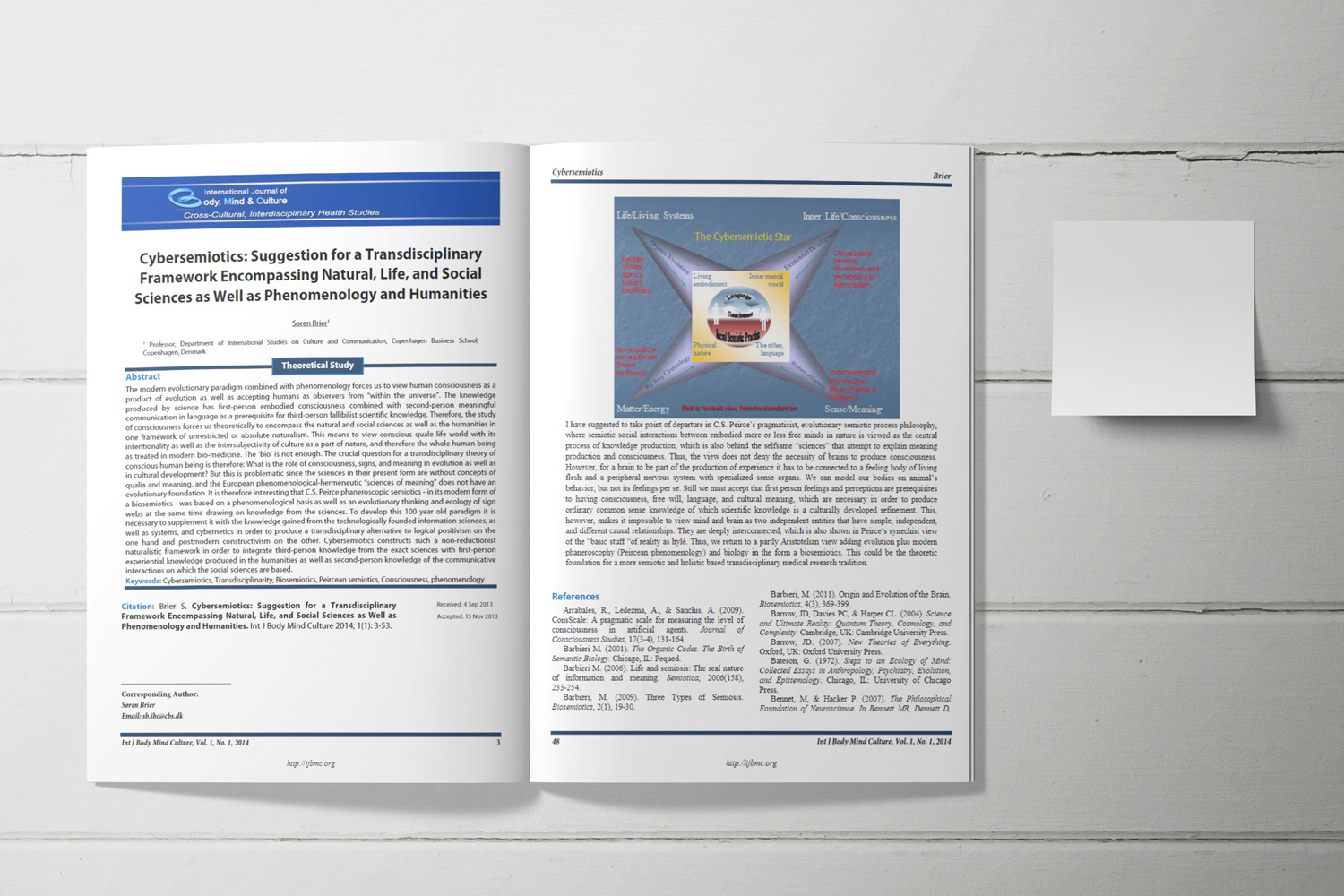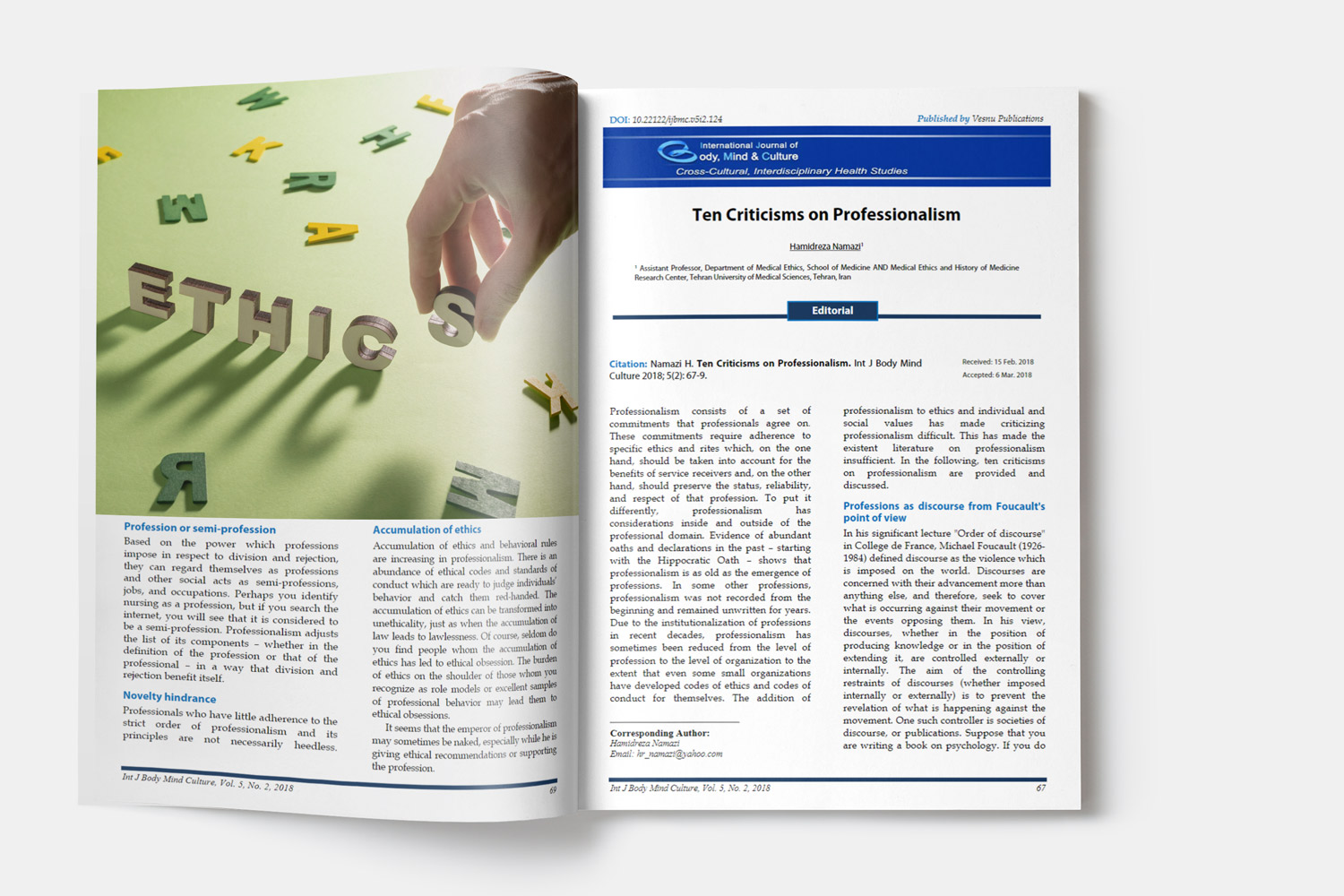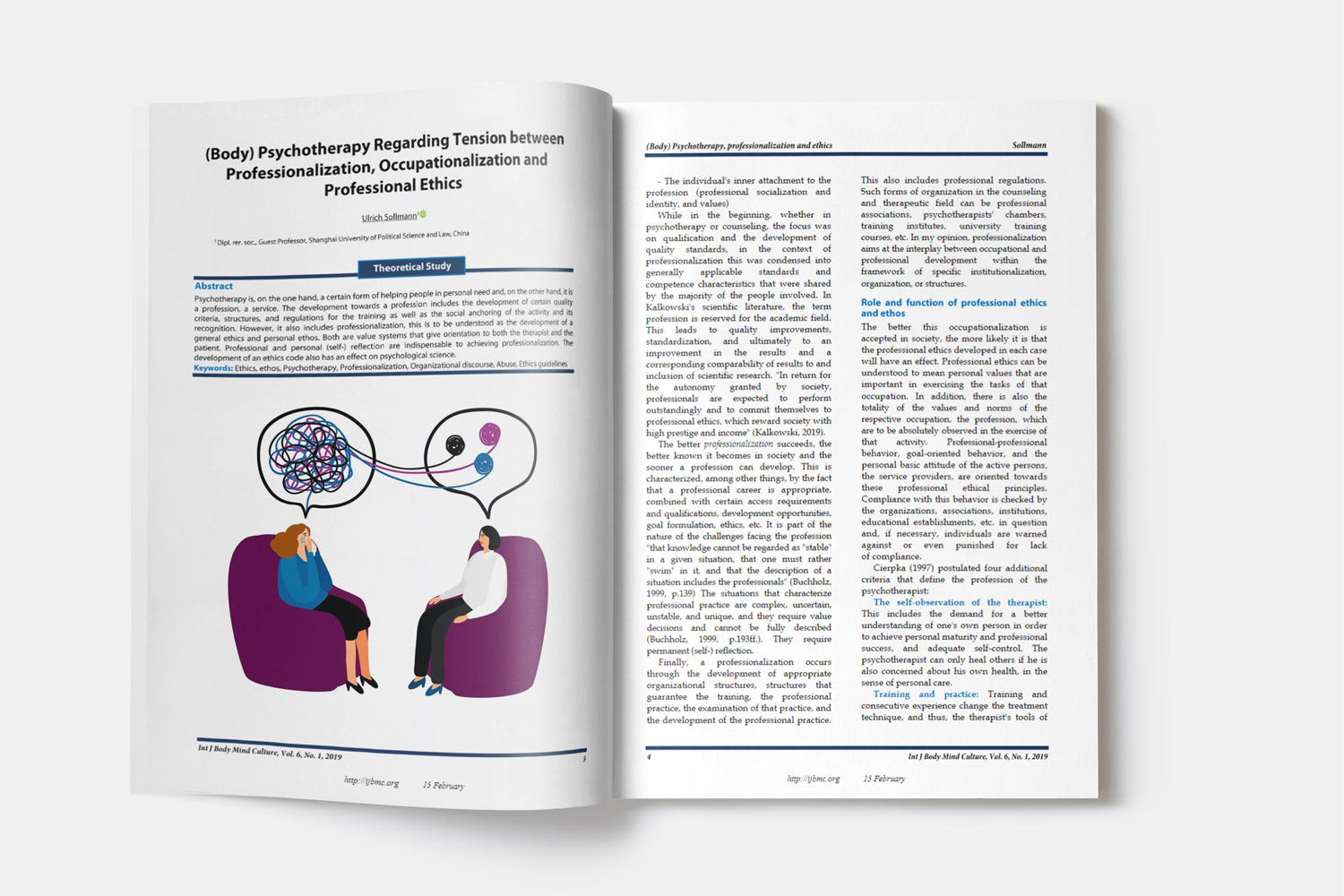The Bodies We Are as Technological Artifact: The Case of 'Jasad'
Downloads
"Jasad" is a Lebanese cultural magazine that I consider as a precious example of Merleau-Ponty's 'flesh-ontology", whereby recovering the body does not only mean to juxtapose mind and body. Rather, it allows for a completely new reconfiguration of all those spheres we have been using to consider separately. Moreover, "Jasad-flesh" remains always at the intersection of "what is set, although flexible". In sum, "Jasad" is a breathing body, living in its heterogeneous unity. My main focus of analysis is the psychosemiotic implications of the consideration of the body as a technological artifact and cultural object.
Downloads
Bakhtin, M. M., Holquist, M., & Emerson, C. (1981). The dialogic imagination four essays. Austin,TX: University of Texas Press.
Bakhtin, M. M. (1984a). Problems of Dostoevsky's poetics. Minneapolis, MN: University of Minnesota Press.
Bakhtin, M. M. (1984b). Rabelais and his world. Bloomington, IN: Indiana University Press.
Bakhtin, M. M., Emerson, C., & McGee, V. W. (1986). Speech genres and other late essays. University of Texas Pres (2nd ed.). Austin, TX: University of Texas Pres.
Billig, M. (1998). Repopulating social psychology: A revised version of events. In B.M. Bayer & J. Shotter (Eds.), Reconstructing the psychological subject: bodies, practices and technologies (pp. 126-152). London, UK: SAGE Publications.
Bordo, S. (1990). Feminism, postmodernism, and gender-scepticism. In L.J. Nicholson (Ed.), Feminism - postmodernism (pp. 133-156). New York, NY: Routledge, Chapman & Hall.
Cresswell, J., & Baerveldt, C. (2009). Materiality matters: Reinterpreting the dialogical self along Bakhtinian Lines. In T. Teo (Ed.), Varieties of theoretical psychology : international philosophical and practical concerns (pp. 316-325). Concord, ON: Captus.
Cresswell, J., & Teucher, U. (2011). The body and language: M. M. Bakhtin on ontogenetic development. New Ideas Psychol, 29, 106-108.
Cromby, J. (2004). Between constructionism and neuroscience: The societal co-constitution of embodied subjectivity. Theory & Psychology, 14(6), 797-821.
Danziger, K. (1997). The varieties of social construction. Theory and Psychology, 7(3), 399-416.
Foucault, M., & Hurley, R. (1988). The history of sexuality, Vol. 3: The Care of the Self. Vintage. New York, NY: Vintage.
Foucault, M. (1998). The birth of biopolitics. In P. Rabinow & M. Foucault (Eds.), Ethics: subjectivity and truth. New York, NY: The New Press.
Gilbert, P., & Lennon, K. (2005). The world, the flesh and the subject: Continental themes in philosophy of mind and body. Edinburgh, Scotland: Edinburgh University Press.
Haraway, D. (1988). Situated knowledges: The Science question in feminism and the privilege of partial perspective. Feminist Studies, 14(3), 575-599.
Haraway, D. J. (1989). Primate visions: Gender, Race, and nature in the world of modern science. New York, NY: Psychology Press.
Haraway, D. J. (1996). Modest_witness@second_millennium.femaleman_meets_oncomouse: feminism and technoscience. New York, NY: Routledge.
Haraway, D. J., & Goodeve, T. (2000). How like a leaf: An interview with Thyrza Nichols Goodeve. New York, NY: Routledge.
Holquist, M. (1990). Dialogism: Bakhtin and his world. New York, NY: Routledge.
Husserl, E. (1970). The crisis of European sciences and transcendental phenomenology. Evanston, IL: Northwestern University Press.
Lakoff, J., & Johnson, M. (1980). Metaphors we live by. Chicago, IL: University of Chicago Pres.
Lakoff, J., & Johnson, M. (1999). Philosophy in the flesh: the embodied mind and its challenge to western thought. Basic Books. New York, NY: Basic Books.
Layton, L. (2008). What divides the subject? Psychoanalytic reflections on subjectivity, subjection and resistance. Subjectivity, 22(1), 60-72.
Mauss, M. (1973). Techniques of the body. Economy and Society, 2(1), 70-88.
Merleau-Ponty, M. (2002). Phenomenology of perception. New York, NY: Routledge.
Mininni, G. (2003). Il discorso come forma di vita. Napoli, Italy: Alfredo Cortina.
Mininni, G. Ligorio, B.& Traversa, S. (2012). The Singular patterns of discourse for a psycho-idiographic analysis of language. In S. Salvatore, A. Gennaro, & J. Valsiner (Eds.), Making Sense of Infinite Uniqueness.
Wetherell, M. (2008). Subjectivity or psycho-discursive practices? Investigating complex intersectional identities. Subjectivity, 22(1), 73-81.
Salvatore, S., & Valsiner, J. (2008). Idiographic science on its way: Towards making sense of psychology. In S. Salvatore, J. Valsiner, S. Strout, & J. Clegg (Eds.), Yearbook of Idiographic Science. Rome , Italy: Firera Publishing Group.
Simone, A. (2010). I corpi del reato. Sessualità e sicurezza nelle società del rischio. Milano, Italy: Mimesis.
Stengers, I. (2008). Experimenting with refrains: subjectivity and the challenge of escaping modern dualism. Subjectivity, 22(1), 38-59.
Tolman, C. (1994). Psychology, society and subjectivity: An introduction to german critical psychology. Routledge. London, UK: Routledge.
Traversa, R. (2010). GITAI GO: The art of deepening everyday life through exceeding codes. Integr Psychol Behav Sci, 44(2), 162-167.
Wilson, E. (1998). Neural geographies: Feminism and the microstructure of cognition. New York, NY: Routledge.
Copyright (c) 2016 International Journal of Body, Mind and Culture

This work is licensed under a Creative Commons Attribution-NonCommercial 4.0 International License.















